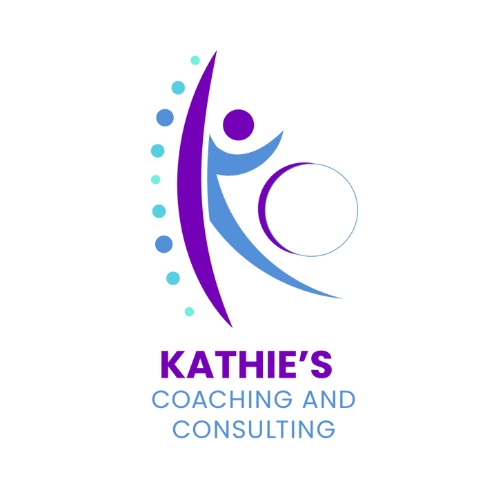The Power of Assessments in Corporate Wellness: Understanding and Optimizing for Success
Corporate wellness programs are more than just a trend—they are a necessity for companies that aim to be top workplaces.
However, the success of these programs hinges on a deep understanding of both the individual leading the initiatives and the team they are designed to serve. That’s where the power of assessments comes into play.
These tools are not just checkboxes to tick off; they are vital instruments that provide actionable insights and drive the effectiveness of wellness initiatives.
Let’s dive into how individual and team assessments can transform corporate wellness programs, starting with some compelling statistics.
The Importance of Individual and Team Assessments
Proven Statistic #1: According to a study by the Society for Human Resource Management (SHRM), corporate wellness leaders (or leaders in general) who regularly engage in individual self-assessments improve their leadership effectiveness by 34%. These assessments allow wellness leaders to identify strengths, areas for development, and blind spots, serving as a crucial tool for personal and professional growth.
Proven Statistic #2: Additionally, the same SHRM study found that teams whose wellness programs are shaped by team-specific assessments experience a 27% higher engagement rate. This demonstrates that when wellness leaders tailor initiatives based on actual team needs and preferences, they are far more likely to resonate with employees, leading to better participation and outcomes.
The Role of Individual Assessments
Individual assessments are a powerful tool for corporate wellness leaders, HR professionals, and anyone responsible for the well-being of their workforce.
These assessments are not just about identifying areas for personal improvement; they are about optimizing your approach to leadership, enhancing your ability to connect with your team, and ultimately, ensuring the success of your wellness initiatives.
1. Identifying Strengths and Weaknesses: Every wellness leader has unique strengths and weaknesses. An individual assessment can help you identify these areas, allowing you to leverage your strengths while addressing any gaps in your skills or knowledge.
For example, you might be excellent at organizing wellness events but may need to improve your communication skills. Knowing this allows you to focus on areas that will make you a more effective leader.
2. Enhancing Leadership Skills: Corporate wellness is not just about the programs you implement; it’s about how you lead and inspire your team to engage with those programs. Individual assessments provide insights into your leadership style and how it impacts your team.
Are you a visionary leader who inspires others with big ideas, or are you more of a hands-on manager who excels at day-to-day operations? Understanding your leadership style can help you tailor your approach to better motivate and engage your team.
3. Continuous Improvement: The business world is constantly evolving, and so are the needs of your workforce. Regular self-assessments allow you to stay ahead of the curve by continually refining your approach to corporate wellness.
This commitment to continuous improvement not only benefits you as a leader but also ensures that your wellness programs remain relevant and effective.
The Role of Team Assessments
While individual assessments help wellness leaders optimize their approach, team assessments are the key to understanding the unique needs and desires of the workforce. Without this critical feedback, even the most well-intentioned wellness programs can miss the mark.
1. Understanding Team Needs: One of the biggest challenges in corporate wellness is knowing what your team truly needs. Are they looking for more mental health support, or is there a desire for fitness programs that can be integrated into their daily routines?
Team assessments provide direct insights into these needs, allowing you to design programs that address the actual concerns and desires of your employees.
2. Increasing Engagement: Engagement is a significant indicator of a successful wellness program. When employees feel that their needs and preferences are being heard and addressed, they are more likely to participate in wellness initiatives.
Team assessments help you gauge interest levels in different types of programs and can reveal any barriers to participation, such as scheduling conflicts or a lack of awareness about available resources.
3. Building a Culture of Wellness: A well-designed wellness program is more than just a series of initiatives—it’s a critical component of your company’s culture. By using team assessments to involve employees in the design and implementation of these programs, you are fostering a culture of wellness that is inclusive, responsive, and aligned with the values of your workforce.
This not only improves participation rates but also helps to create a positive work environment where employees feel valued and supported.
Integrating Assessments into Your Corporate Wellness Program
Now that we’ve established the importance of both individual and team assessments, let’s explore how to integrate these tools into your corporate wellness program.
1. Start with Self-Assessment: Before rolling out any wellness initiatives, start with an individual assessment. This could be a formal evaluation or a more informal self-reflection. The goal is to identify areas where you can improve as a leader and to set personal goals that will enhance your ability to lead your team effectively.
For example, if you identify that time management is a challenge, you might set a goal to develop better organizational strategies to ensure that you can balance the demands of leading a wellness program with your other responsibilities.
2. Conduct Regular Team Assessments: Team assessments should be conducted regularly, at least once a quarter, to ensure that your wellness programs are meeting the needs of your employees. These assessments can take the form of surveys, focus groups, or even informal feedback sessions.
The key is to create a feedback loop where employees feel that their input is valued and that their needs are being addressed.
For example, if a team assessment reveals that employees are experiencing high levels of stress, you might prioritize stress management workshops or mindfulness programs.
3. Use Data to Drive Decision-Making: The data you gather from both individual and team assessments should be the foundation of your decision-making process. This data will help you identify trends, prioritize initiatives, and allocate resources effectively.
For instance, if team assessments reveal that employees are more interested in physical wellness programs, you might invest more in gym facilities, fitness classes, or health challenges.
4. Measure Success and Adjust Accordingly: Finally, it’s essential to measure the success of your wellness programs and make adjustments as needed. This is where ongoing assessments come into play.
By regularly evaluating the effectiveness of your initiatives, you can make data-driven decisions about what’s working and what’s not.
For example, if a particular program is not achieving the desired level of engagement, you might revisit the team assessment data to identify potential improvements or alternative approaches.
Conclusion
Assessments are the cornerstone of any successful corporate wellness program. They provide the insights needed to tailor initiatives to the unique needs of both the wellness leader and the team, leading to higher engagement, better outcomes, and a more positive work environment.
By committing to regular individual and team assessments, you are not only enhancing your ability to lead but also ensuring that your wellness programs are truly making a difference in the lives of your employees.
Remember, the success of your corporate wellness program starts with understanding—understanding yourself as a leader and understanding the needs of your team. With the power of assessments, you can build a wellness program that is not only effective but also meaningful, creating a healthier, happier, and more engaged workforce.
About the Author: Kathie Owen is a seasoned Corporate Wellness Professional with over a decade of experience driving wellness initiatives since 2012.
With a rich background as a certified fitness trainer and life coach since 2002, Kathie combines her practical expertise in health and wellness with a deep understanding of psychological principles, thanks to her degree in Psychology.
Her holistic approach to corporate wellness not only fosters a culture of health and engagement among employees but also supports organizations in achieving their most ambitious wellness goals.
Kathie's Coaching and Consulting reflects her passion for empowering HR directors and aspiring corporate wellness leaders to create thriving workplace environments through strategic wellness programs and employee engagement. Read Our Story Here!
Kathie Owen, Corporate Wellness Consultant since 2012 (Our Story)















A leadership coach shares her personal journey of being fired for speaking up against toxic workplace culture, drawing parallels with Ted Lasso's themes of authentic leadership and courage. Her story illustrates how challenging systemic dysfunction often comes at a cost—but leads to greater freedom. #WorkplaceCulture #Leadership #TedLasso #ToxicWorkplace #CareerGrowth